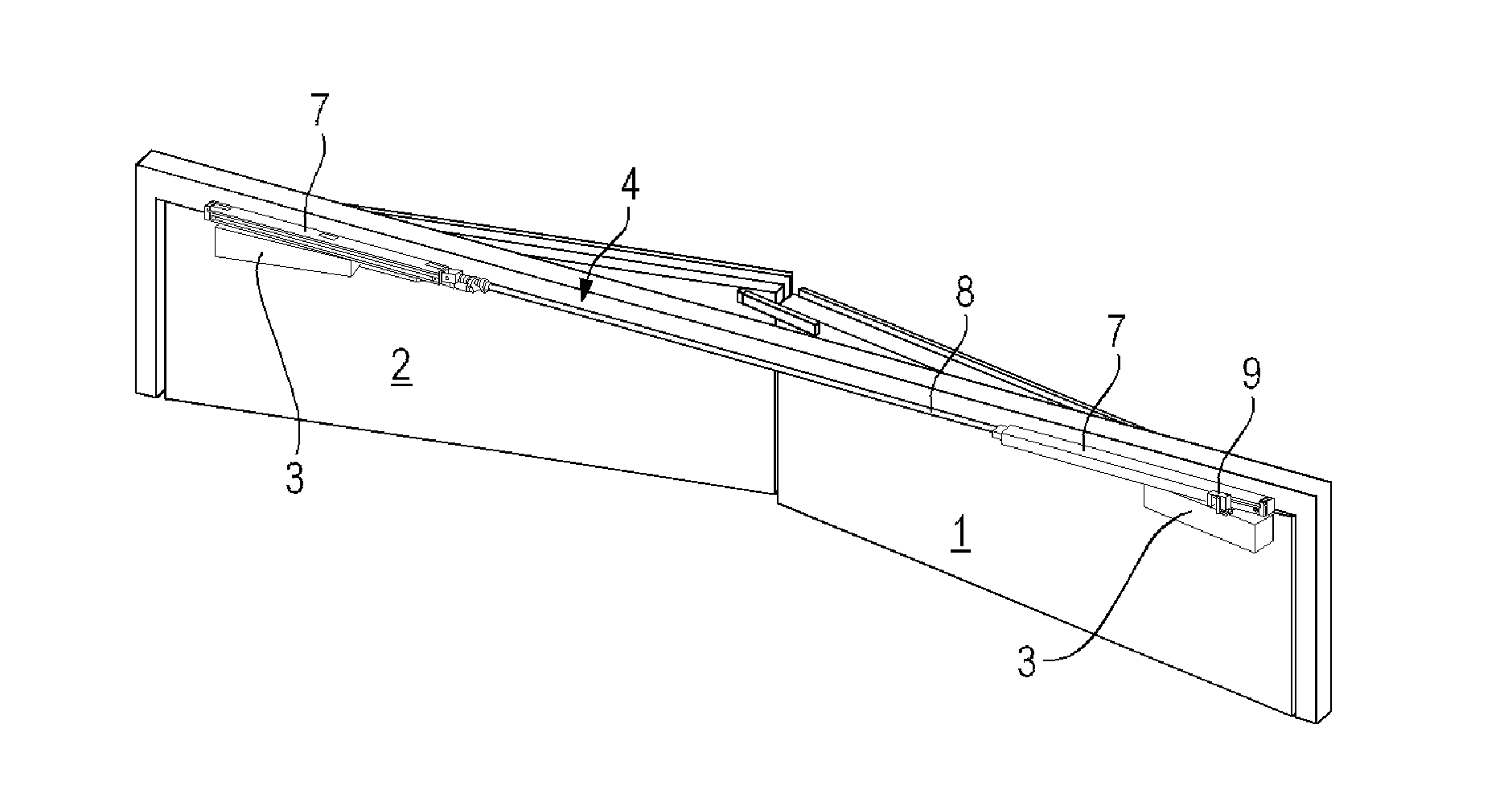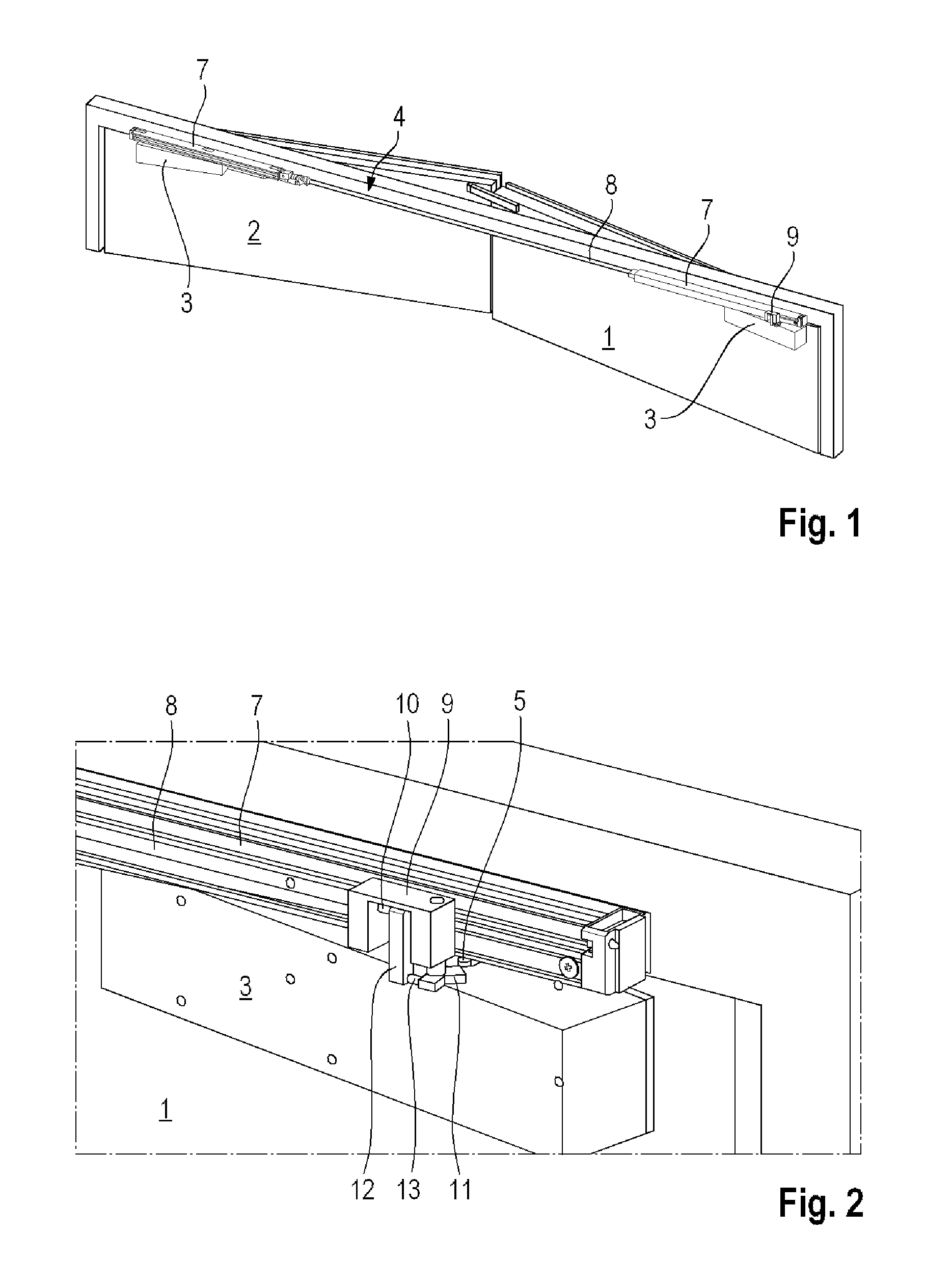Closing sequence control for a double-leaf door
a double-leaf door and sequence control technology, applied in the direction of door/window fittings, building braking devices, constructions, etc., can solve the problem of not always reliably achieving desired functioning, and achieve the effect of reliably ensuring desired functioning
- Summary
- Abstract
- Description
- Claims
- Application Information
AI Technical Summary
Benefits of technology
Problems solved by technology
Method used
Image
Examples
Embodiment Construction
[0024]In the following description and in the figures, the door, the door closer thereof, and the closing sequence control will be explained and illustrated only in the context which is relevant herein. In particular the elements of the closing sequence control, disposed in the guiding rail, will not be dealt with, but considered as already known.
[0025]FIG. 1 shows a double-leaf door including an inactive leaf 1 and an active leaf 2. In the upper area of the inactive leaf 1 and of the active leaf 2, respectively one overhead door closer 3 as well as a closing sequence control 4 are disposed on the push-side.
[0026]Each overhead door closer 3 includes a closer shaft 5, which is connected to the one end of a pivoting arm 6, which, with its other end and via a siding member, is longitudinally movable guided in a frame-fixed guiding rail 7. The siding member associated to the active leaf 2 is connected to a clamping rod which is supported in the guiding rail 7 and charged by means of a c...
PUM
 Login to View More
Login to View More Abstract
Description
Claims
Application Information
 Login to View More
Login to View More - R&D
- Intellectual Property
- Life Sciences
- Materials
- Tech Scout
- Unparalleled Data Quality
- Higher Quality Content
- 60% Fewer Hallucinations
Browse by: Latest US Patents, China's latest patents, Technical Efficacy Thesaurus, Application Domain, Technology Topic, Popular Technical Reports.
© 2025 PatSnap. All rights reserved.Legal|Privacy policy|Modern Slavery Act Transparency Statement|Sitemap|About US| Contact US: help@patsnap.com



